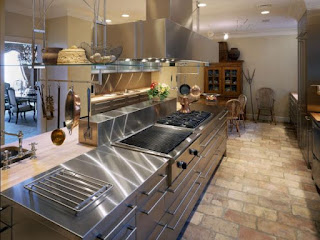304 Stainless Steel vs 316 Stainless Steel
Contrary to its name, stainless steel is valued for its anti-corrosion properties rather than its resistance to staining. It's an alloy composed primarily of iron—but when combined with other elements, it can achieve properties desirable for a range of applications. Chromium is the defining ingredient that makes stainless steel what it is, making up a minimum of 10.5 percent of total composition. Other common alloy ingredients include nickel, titanium, aluminum, copper, nitrogen, phosphorous and selenium.
The difference between 304 and 316 stainless steel is the presence of molybdenum, which provides a much higher degree of corrosion resistance—especially for more saline environments where exposure to chlorides is expected. Foroutdoor site furnishings, stainless steel is an ideal corrosion-resistant material that will withstand long-term exposure to the environment.
Natural corrosion resistance
Different quantities of chromium, as well as other materials, can be used to achieve varying degrees of corrosion resistance. The two most common stainless steel grades are 304 and 316.
Corrosion is a natural phenomenon. Pure elements, such as iron, inherently react with surrounding environments. In fact, very few elements can be found naturally in their pure form—gold, silver, copper and platinum being some of the few examples.
Stainless steel has the innate ability to form a protective surface that prevents corrosion. How does this happen? The chromium found in all stainless steels reacts quickly with oxygen environments, much the same as iron. The difference, however, is that only a very fine layer of chromium will oxidize (often only a few molecules in thickness). This incredibly thin barrier is highly durable and non-reactive. It adheres to stainless steel surfaces and won't transfer or react further with other materials. It is also self-renewing in that it will replenish if damaged or removed. Once oxidized, or passivized, stainless steel typically rusts at a very low rate of less than 0.002 inches per year.Rust is the process where iron molecules combine with oxygen in the presence of water. The result is a red flaky oxide that deteriorates easily—exposing more material to further corrosion. Iron and standard carbon steels are highly susceptible to this type of corrosion.
When kept in its best condition, stainless steel offers clean and bright surfaces ideal for many building andlandscape designs.
304 Stainless Steel
Stainless steel provides an attractive, clean finish with low maintenance cost
304 stainless steel has a high resistance to rust. It withstands corrosion from most oxidizing acids and is often used for kitchen and food applications. However, it is susceptible to corrosion from chloride solutions (notably saline environments with high amounts of sodium chloride). Chloride ions can create localized areas of corrosion, called "pitting," which can spread beneath protective chromium barriers to compromise internal structures. Solutions with as little as 25 ppm of sodium chloride can begin to have a corrosive effect.
304 grade is the most common form of stainless steel used around the world. It contains between 16 and 24 percent chromium and up to 35 percent nickel—as well as small amounts of carbon and manganese. The most common form of 304 stainless steel is 18-8, or 18/8, stainless steel, which contains 18 percent chromium and 8 percent nickel.
316 Stainless Steel
316 grade is the second-most common form of stainless steel. It has almost the same physical and mechanical properties as 304 stainless steel and contains a similar material make-up. The difference is that 316 stainless steel incorporates about 2 to 3 percent molybdenum, which increases corrosion resistance—particularly against chlorides and other industrial solvents. Alternative 300-series grades can contain up to 7 percent molybdenum.
316 stainless steel is commonly used in many industrial applications involving processing chemicals, as well as high-saline environments such as coastal regions and outdoor areas where de-icing salts are common. Due to its non-reactive qualities, 316 stainless steel is also used in the manufacture of medical surgical instruments.
Versatile applications
Both 304 and 316 stainless steels (as well as other 300-series grades) use nickel to maintain an austenitic composition at lower temperatures. Austenitic steels ensure a versatile balance of strength, workability and corrosion resistance, making them ideal for outdoor architectural and landscape applications. The benefits of stainless steel include a long service life that will retain an attractive, clean finish with low maintenance cost. It also maintains a high value if and when equipment and parts need to be decommissioned.
Reliance Foundry offers a selection of stainless steel bollards that can be mounted for various fixed, removable, fold-down and retractable applications. Our stainless steel products use only 316 grade material for the best performance in almost any North American environment.




















